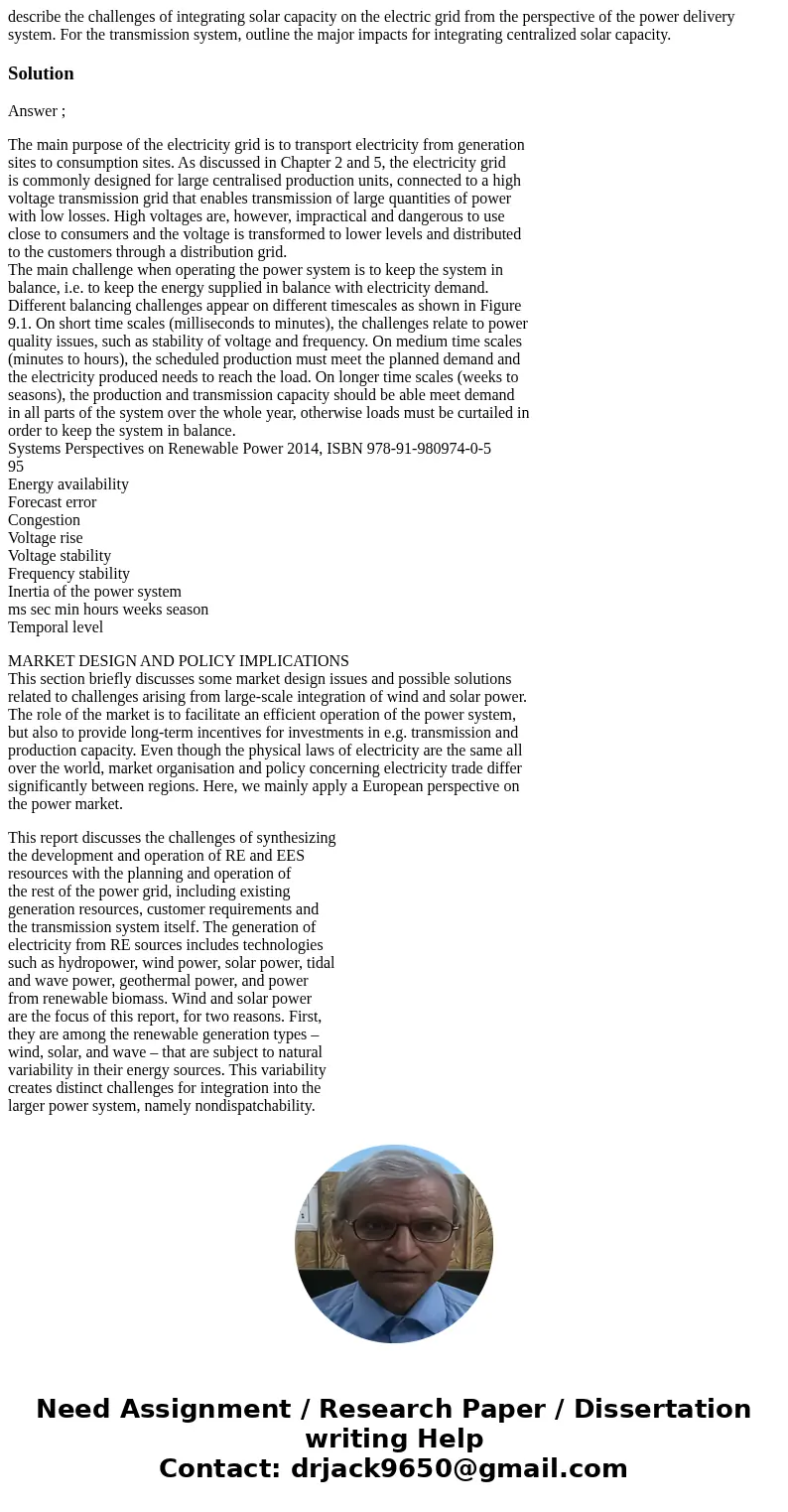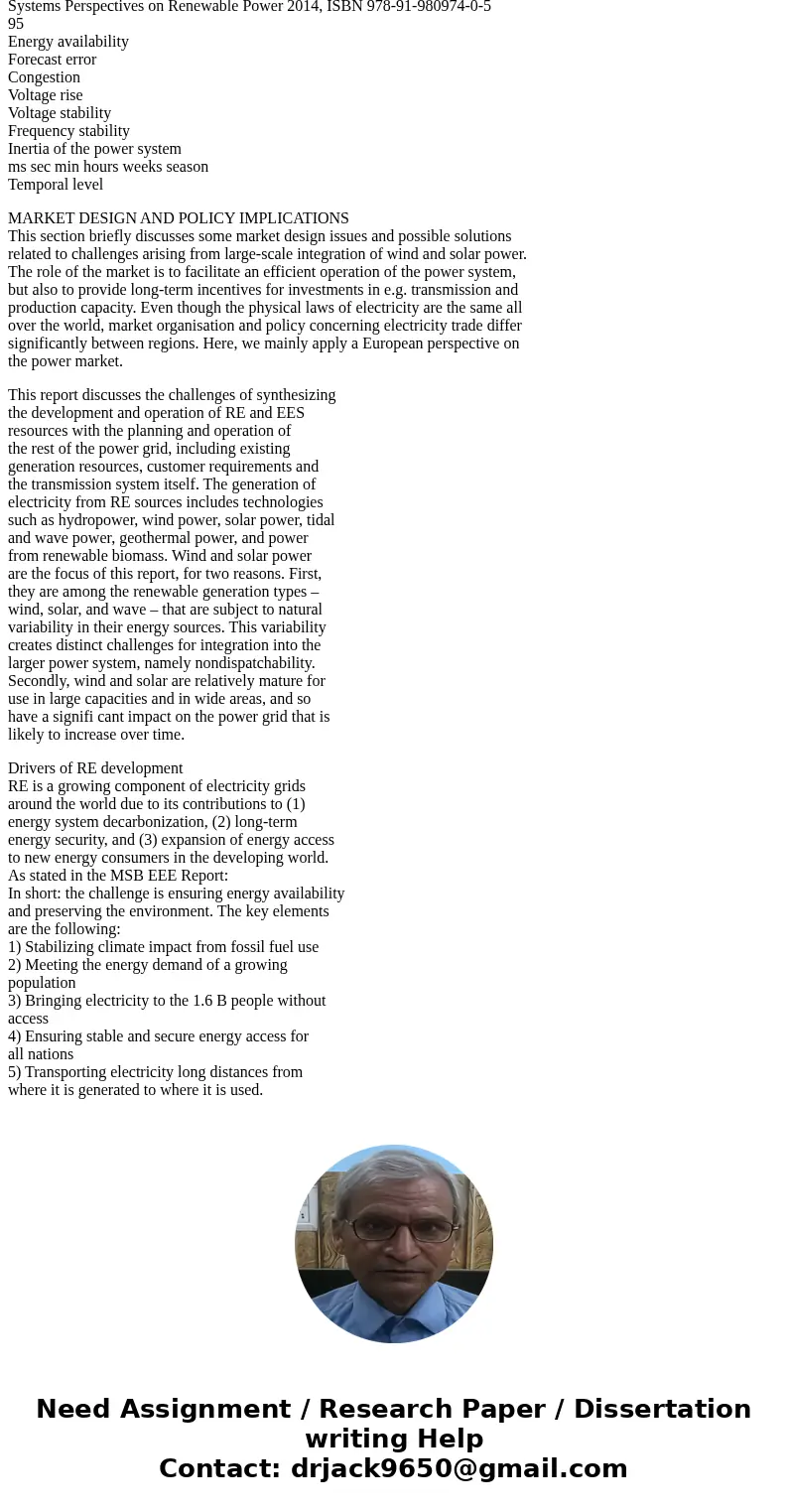describe the challenges of integrating solar capacity on the
describe the challenges of integrating solar capacity on the electric grid from the perspective of the power delivery system. For the transmission system, outline the major impacts for integrating centralized solar capacity.
Solution
Answer ;
The main purpose of the electricity grid is to transport electricity from generation
sites to consumption sites. As discussed in Chapter 2 and 5, the electricity grid
is commonly designed for large centralised production units, connected to a high
voltage transmission grid that enables transmission of large quantities of power
with low losses. High voltages are, however, impractical and dangerous to use
close to consumers and the voltage is transformed to lower levels and distributed
to the customers through a distribution grid.
The main challenge when operating the power system is to keep the system in
balance, i.e. to keep the energy supplied in balance with electricity demand.
Different balancing challenges appear on different timescales as shown in Figure
9.1. On short time scales (milliseconds to minutes), the challenges relate to power
quality issues, such as stability of voltage and frequency. On medium time scales
(minutes to hours), the scheduled production must meet the planned demand and
the electricity produced needs to reach the load. On longer time scales (weeks to
seasons), the production and transmission capacity should be able meet demand
in all parts of the system over the whole year, otherwise loads must be curtailed in
order to keep the system in balance.
Systems Perspectives on Renewable Power 2014, ISBN 978-91-980974-0-5
95
Energy availability
Forecast error
Congestion
Voltage rise
Voltage stability
Frequency stability
Inertia of the power system
ms sec min hours weeks season
Temporal level
MARKET DESIGN AND POLICY IMPLICATIONS
This section briefly discusses some market design issues and possible solutions
related to challenges arising from large-scale integration of wind and solar power.
The role of the market is to facilitate an efficient operation of the power system,
but also to provide long-term incentives for investments in e.g. transmission and
production capacity. Even though the physical laws of electricity are the same all
over the world, market organisation and policy concerning electricity trade differ
significantly between regions. Here, we mainly apply a European perspective on
the power market.
This report discusses the challenges of synthesizing
the development and operation of RE and EES
resources with the planning and operation of
the rest of the power grid, including existing
generation resources, customer requirements and
the transmission system itself. The generation of
electricity from RE sources includes technologies
such as hydropower, wind power, solar power, tidal
and wave power, geothermal power, and power
from renewable biomass. Wind and solar power
are the focus of this report, for two reasons. First,
they are among the renewable generation types –
wind, solar, and wave – that are subject to natural
variability in their energy sources. This variability
creates distinct challenges for integration into the
larger power system, namely nondispatchability.
Secondly, wind and solar are relatively mature for
use in large capacities and in wide areas, and so
have a signifi cant impact on the power grid that is
likely to increase over time.
Drivers of RE development
RE is a growing component of electricity grids
around the world due to its contributions to (1)
energy system decarbonization, (2) long-term
energy security, and (3) expansion of energy access
to new energy consumers in the developing world.
As stated in the MSB EEE Report:
In short: the challenge is ensuring energy availability
and preserving the environment. The key elements
are the following:
1) Stabilizing climate impact from fossil fuel use
2) Meeting the energy demand of a growing
population
3) Bringing electricity to the 1.6 B people without
access
4) Ensuring stable and secure energy access for
all nations
5) Transporting electricity long distances from
where it is generated to where it is used.


 Homework Sourse
Homework Sourse